Learn everything about AI in UX design and how it's changing the landscape. Also, explore the best tools, future trends, and limitations of AI in the field.
Artificial intelligence has disrupted numerous design fields, including UX design, and is gradually increasing the potential of UX designers to work more efficiently. A McKinsey report estimates that adopting AI could boost global economic output by $13 trillion by 2030. As AI tools drive greater efficiency and productivity across industries, particularly in UX design, professionals in this field will also become increasingly familiar with these technologies.
AI is changing the design landscape by automating repetitive tasks and developing more intuitive user experiences. It is here to support designers as a collaborative partner — improving productivity and workflows throughout the design process. In this guide, we will walk you through the various aspects of AI in UX design and introduce you to tools and future trends that you should know about.
Here’s what we will cover in this blog:
- How are AI-powered interfaces changing the landscape?
- Best AI tools for UX designers
- Future Trends of AI in UX design
- Limitations of AI in UX design
- In summary
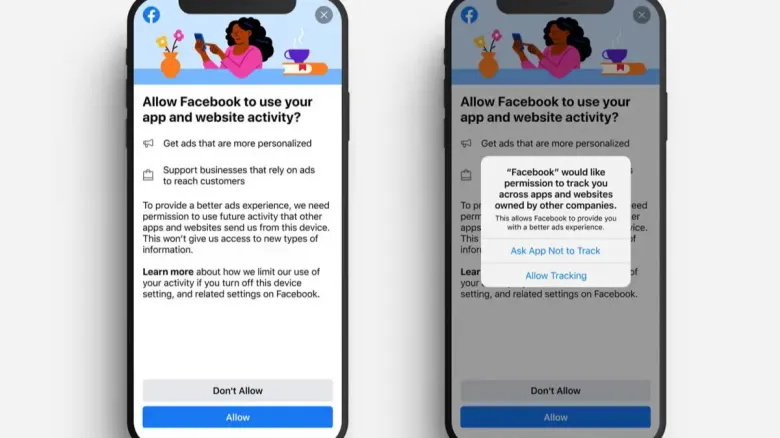
Image Courtesy: LinkedIn
How are AI-powered interfaces changing the landscape?
Prompts generate multiple mockups, shifting the focus from staring at a blank workspace to actively exploring and refining creative ideas. The process of fleshing out design becomes less technical and more strategic and design-oriented. With AI, designers can now quickly visualise ideas, test them, and make informed decisions. Here’s how these interfaces are changing the landscape:
1. Increased personalization
AI-powered interfaces make it easy to analyze large volumes of user data, such as browsing histories, interaction patterns, and behavioral preferences. Websites and apps identify this information and adapt their content for customized experiences. Platforms like Netflix and Spotify use recommendation engines that boost engagement rates by up to 35%. These systems make adjustments to content, layouts, and features in real-time based on individual profiles, creating experiences that feel genuinely tailored to varying tastes and behaviors.
2. Improved user experience with predictive analytics
Analyzing user data and behavior with AI integration can help anticipate what the user needs or is most likely to do in the future. It proactively presents relevant information, rather than relying on users to navigate through interfaces. The ability to predict can be noticed in features like auto-filling forms, refilling frequently purchased items, suggesting subsequent actions, and preventing mistakes. Most businesses can leverage these insights to provide smarter recommendations and increase sales or subscriptions.
3. Rapid prototyping and testing
Designers identify potential pain points, analyze user interaction, and provide actionable insights with AI. It also speeds up the A/B testing process and provides recommendations for improvement. Tools like UsabilityHub and Lookback, for example, enable designers to quickly create interactive UI elements. This development has created a new role for professionals who work at the intersection of design and code, using working prototypes to communicate tradeoffs between design choices and implementation.
4. Voice and gesture integration
With the rise of popular voice assistants like Alexa and Google Assistant, designers can view voice user interface (UI) as an essential aspect of user experience (UX). Voice and gesture-based systems can handle complex conversations as well as understand natural language and context. This evolution makes digital products more accessible to users with disabilities, allowing hands-free interaction and effortless multitasking. As a result, digital products are now more inclusive and convenient for a broader range of users.
5. Emotional intelligence in design
Advanced AI interfaces analyze facial expressions, voice tone, and behavioral patterns to detect the emotional states of users. These systems can adapt their interface presentation by adjusting color schemes for stressed users or providing simplified navigation during moments of frustration. This creates more empathetic experiences that respond to human emotions in real-time.
Best AI tools for UX designers
While there are numerous AI tools available in the market, here are some of the best ones that can support UX designers:
1. Figma AI
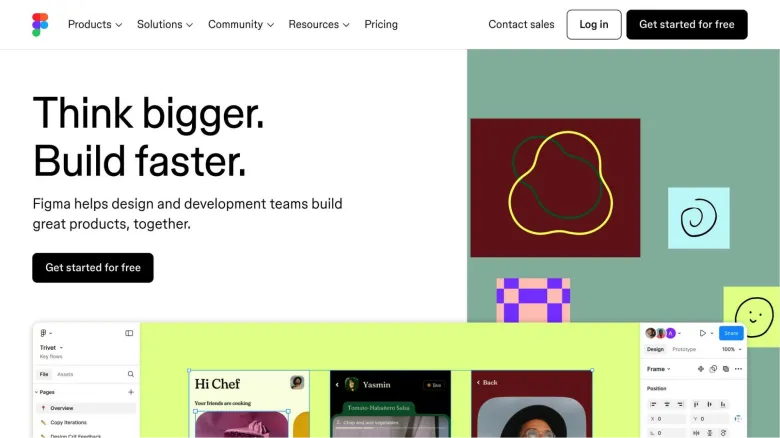
Image Courtesy: UXPin
Figma is a leading collaborative design platform, supported by powerful AI plugins like Automator and MagiCopy that automate content generation and design suggestions. These plugins enable rapid wireframe creation, automated layout generation, and smart content placement, making Figma a go-to, powerful design environment.
Features
- Text-to-design conversion
- Matching components search
- Context-aware duplication
- Automated layer organization
2. Uizard

Image Courtesy: Uizard
Uizard is a wireframing and prototyping tool that specializes in converting hand-drawn sketches or screenshots into high-fidelity prototypes within minutes. You can also use it to generate wireframes and prototypes with text prompts and drag-and-drop UI components. It is particularly valuable for rapid ideation as it bridges the gap between initial ideas and functional prototypes.
Features
- Rapid wireframing
- Editable mockups
- Premade components
- Style suggestion
- Code-free design
- Smart element organization
3. Attention Insight
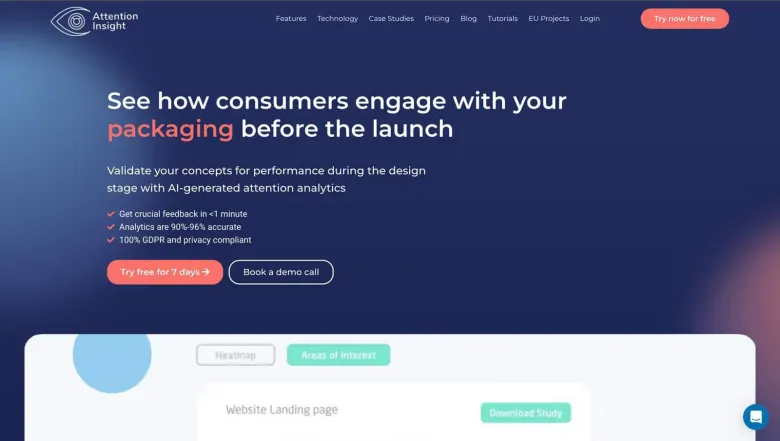
Image Courtesy: Attention Insight
Attention Insight is an analytics tool that uses AI-generated heatmaps to predict where users will focus their attention on a webpage. It uses advanced algorithms to simulate visual attention and allows designers to optimize layouts before launch. This ability comes in handy for landing page design and conversion rate optimization.
Features
- Instant attention heatmap
- Clarity score
- Neutral platform
- Device-specific insights
- Focus maps
4. Khroma
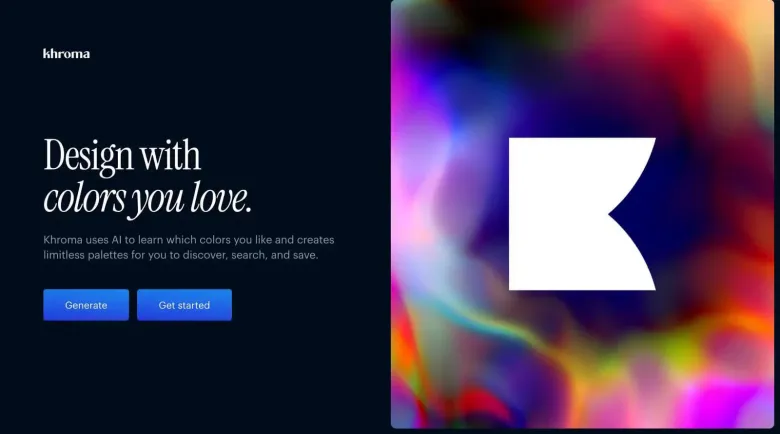
Image Courtesy: Khroma
Khroma is an AI tool that simplifies the process of selecting colors for your project. It personalizes color selection by learning user preferences and generates custom palettes. The tool eliminates the struggle of deciding on a color palette and finds the perfect ones that align with your visual perception.
Features
- Color suggestions
- Real-time collaboration
- Adaptive color accessibility
- Color harmony
5. Galileo AI
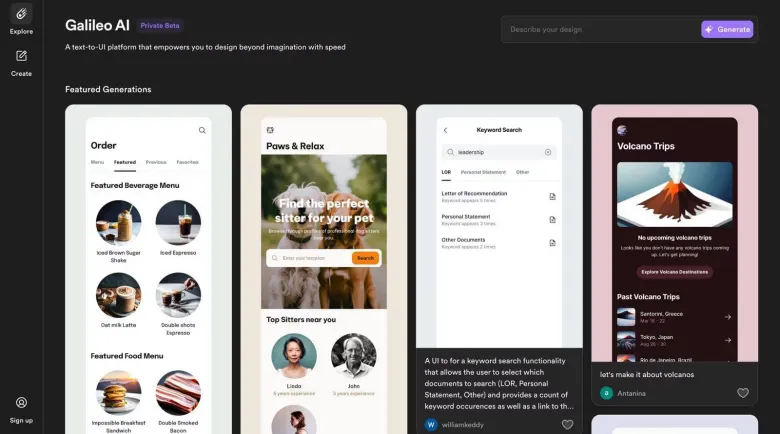
Image Courtesy: Galileo
Galileo AI is a platform designed explicitly for UX designers that optimizes design processes and improves user experience. It swiftly generates insights from text prompts describing a vision, provides recommendations, and real-time design suggestions. Ideally, this tool is used for rapid and easy design ideation.
Features
- Seamless user flow analysis
- Adaptive learning algorithm
- Design assistance
6. ChatGPT

Image Courtesy: Bluesoft
ChatGPT is a versatile AI assistant that can generate responses based on text prompts. You can provide instructions to the model according to your requirements, and it will generate a structure that can be useful for your UX design process. It is ideal for research, competitor analysis, strategic design thinking, and documentation.
Features
- Generates detailed responses
- Provides structured documentation
- Supports collaborative design communication
- Easily integrates into workflows
Future Trends of AI in UX design
With continuous advancements in AI technology and changes in consumer behavior, it has become necessary to understand the changes you might encounter in the near future. Knowledge about these trends can help you evolve and grow in the industry.
Here’s a rundown of the future trends related to AI in UX Design you should be aware of.
1. Hyper personalization
Future AI systems are expected to move beyond current algorithms to create adaptive interfaces that modify themselves based on real-time context, emotional state, and predictive user needs. Soon, AI will be able to anticipate user requirements before they’re consciously recognized, creating interfaces that feel almost telepathic in their responsiveness. Apps are becoming smarter in adapting to user preferences in a non-intrusive way. For example, an app might adjust its color scheme to suit the time of day or recommend playlists reflecting your changing moods throughout the week.
2. AI agents in design workflows
AI agents will become active collaborators in the design process, capable of conducting user research, generating design variations, and even making autonomous decisions within defined parameters. These agents will work alongside designers as creative partners, handling routine decisions while enabling human designers to focus on the strategic and innovative aspects of design.
3. Advanced voice and multimodal interfaces
Voice user interfaces will be capable of handling complex conversational flows instead of click-based interactions. It will also maintain context across extended interactions. The integration of gesture recognition, eye tracking, and voice commands will create multimodal experiences that feel more natural and intuitive than touch-based interactions.
4. Predictive accessibility design
AI will proactively identify and resolve accessibility issues before they impact users, automatically generating alternative interaction methods and ensuring inclusive design principles are embedded throughout the development process. Natural language processing (NLP) enables systems like Google Assistant to interpret and respond to user needs with contextual understanding, making interactions more engaging and interactive. In the future, AI will improve accessibility even further by customizing interfaces to users’ abilities, offering features like screen readers, gesture controls, and simplified designs that cater specifically to people with disabilities.
5. Brain-computer interfaces (BCIs)
Brain-computer interfaces (BCIs) have the potential to transform user experience (UX) Design by enabling people to interact with technology using their thoughts, eliminating the need for conventional interfaces. Companies like Neuralink, for example, are creating brain-machine interfaces that allow direct communication between the brain and computers, which could greatly benefit individuals with paralysis. However, these breakthroughs raise important ethical concerns, including data privacy and psychological effects, emphasizing the need for human-centered design practices.

Limitations of AI in UX design
While AI has numerous benefits and great potential, it also comes with certain limitations that designers and organizations need to navigate.
1. Creative constraints
AI systems are fundamentally limited to their training data, which means they’re excellent at identifying patterns and variations within existing design definitions but struggle with innovative or groundbreaking solutions. This dependency on historical data can lead to design homogenization, where AI-generated solutions begin to look similar across different projects and organizations. The technology lacks the intuitive leap and creative insight that human designers bring to challenging design problems.
2. Bias and ethical concerns
Biases in AI systems are present in their training data, potentially creating discriminatory experiences for certain user groups. These biases show up in recommendations, content personalization, or accessibility features that inadequately serve diverse audiences. Without careful curation of training data and ongoing bias monitoring, AI tools can perpetuate stereotypes or exclude representation of users. The transparency of AI decision-making processes, such as user consent and data privacy in app interactions, is also an important parameter of ethical concern. Designers should prioritise creating AI systems that are easy to understand, making algorithms transparent and free from bias that could impact diverse user groups.
3. Dependency
There's a risk that designers may become overly dependent on AI tools, potentially losing their creative and analytical skills over time. This reliance can lead to reduced design thinking capabilities and less critical evaluation of AI-generated solutions. The convenience of AI tools may discourage designers from developing user empathy and design intuition.
4. Context
AI struggles with understanding contextual factors, cultural references, and emotional nuances that impact user experience design. While AI can process behavioral data efficiently, it often misses the deeper human motivations and factors that inform effective design decisions. This limitation is particularly problematic when designing for diverse global audiences or specialized user groups.
5. Technical complexities
Implementing AI in UX design requires specialized technical knowledge, computational resources, and ongoing maintenance that many organizations or designers may find challenging. The complexity of AI systems can also make them difficult to troubleshoot, modify, or adapt to changing requirements.
6. Data privacy
Integrating AI into UX design raises concerns regarding data privacy and security. The collection and analysis of behavioral patterns, preferences, and personal information necessary for AI personalization can conflict with user privacy expectations and regulatory requirements. Designers must be aware of the risks associated with collecting personal data, including obtaining consent, encrypting the data, and ensuring its security against unauthorized access.

In Summary
We trust that our guide has helped you understand the workings of AI in UX design and inspired you to inculcate it into your workflow. Whether you're collaborating within a design team or honing your skills for personal projects, learning how to use AI tools can be highly beneficial for advanced stages of your design process.
Here are a few things to keep in mind about AI in UX design:
- AI is improving UX design by automating mundane tasks, enabling designers to put all their focus on creativity, usability, and strategic thinking.
- Designers can use AI to quickly identify pain points, analyze user behaviors, accelerate A/B testing, and receive actionable insights, streamlining the design iteration process.
- AI-powered interfaces analyze user data to personalize content, predict user needs, and provide proactive recommendations.
- Top AI tools for UX designers are Figma AI, Uizard, Attention Insight, Khroma, Galileo AI, and ChatGPT
- Future trends include hyper-personalization, collaborative AI agents within workflows, multimodal interfaces (voice, gesture, eye tracking), predictive accessibility, and the development of BCIs.
- Limitations of AI in UX include potential bias, dependency on existing data, difficulty grasping context, technical complexities, and data privacy considerations.
- The future of AI in UX design lies in empowering human designers, enabling more efficient and empathetic digital experiences.
If you’re considering learning more about UI UX design and are looking to launch an exciting new career in the space, check out the UI UX Design Course offered by AND, which comes with a comprehensive AI-inclusive curriculum covering hands-on learning opportunities, unparalleled mentorship, and dedicated placement support. You can check out this project by AND Learner, Yash Ramdas, to see how your classes can shape your skillset.
To learn more about UI UX design, head over to the AND Academy blog for more articles. As a starting point, you can consider going through the following resources:
1. All About Responsive Design: Principles, Best Practices, and Its Correlation to UI UX
2. Do You Need a Design Background to Become a Professional UI UX Designer?
3. Top 13 UX Design Bootcamps To Consider (and How To Choose One)
Next Steps
In case you think you need further assistance, here are some of our resources you can consider:
- Watch this session by Shiva Viswanathan, Design Head of Ogilvy Pennywise, and Naman Singh, Product Experience Designer at RED.
- Talk to a course advisor to discuss how you can transform your career with one of our courses.
- Pursue our UI UX Design courses - all courses are taught through live, interactive classes by industry experts, and some even offer a Job Guarantee.
- Take advantage of our scholarship and funding options to overcome any financial hurdle on the path of your career transformation.
Note: All information and/or data from external sources is believed to be accurate as of the date of publication.










